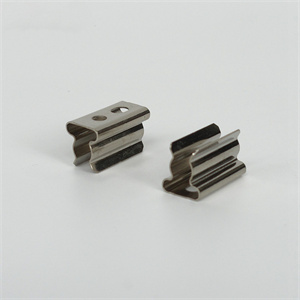Multi-slides stamping parts are advanced stamping process used to manufacture metal parts with complex shapes and features. This process, which combines multiple slides and die movements, enables more efficient and precise stamping operations. In the manufacture of Multi-slides stamping parts, the main materials commonly used include the following:
Carbon steel: Carbon steel is very popular in multi-slide stamping parts due to its high strength and good machinability. By adjusting the carbon content and heat treatment process, different levels of hardness and toughness can be obtained to meet the needs of various applications.
Stainless steel: Stainless steel is widely used in multi-slide stamping parts due to its excellent corrosion resistance and aesthetics. Stainless steel is ideal especially in applications that require long-term stability in appearance and performance, such as medical devices, food packaging, and more.
Alloy steel: Alloy steel improves its strength and wear resistance by adding other metal elements such as chromium, nickel, tungsten, etc. In multi-slide stamping, alloy steels are often used to manufacture components that need to withstand high loads or high friction.
Copper and copper alloys: Copper and its alloys, such as brass, phosphor bronze, etc., have good electrical conductivity, thermal conductivity and processability. They are particularly popular in electrical, electronic and decorative applications.
Aluminium and aluminium alloys: Aluminium and its alloys are lightweight, strong and corrosion-resistant, making them suitable for the manufacture of multi-slide stampings that require weight reduction. In aerospace, automotive and other fields, aluminum alloy is particularly widely used.
When choosing a material for Multi-slides stamping parts, you need to consider factors such as the purpose of the part, the working environment, the mechanical performance requirements, and the cost. In addition, the stampability of the material, the difficulty of processing, and the surface treatment are also key factors to consider.
